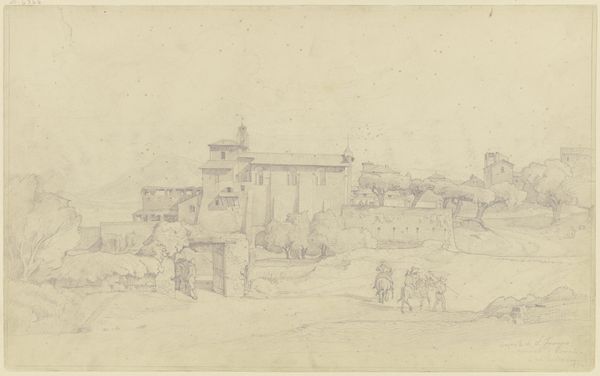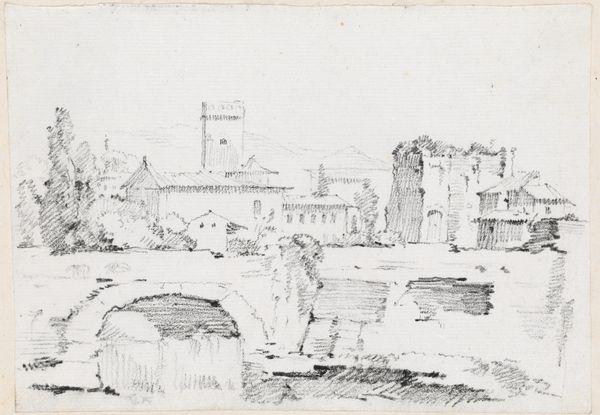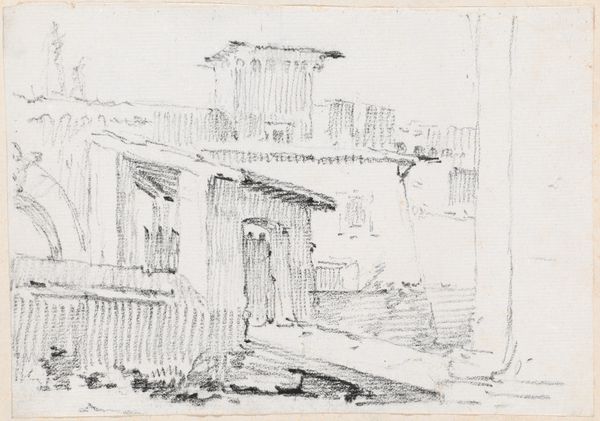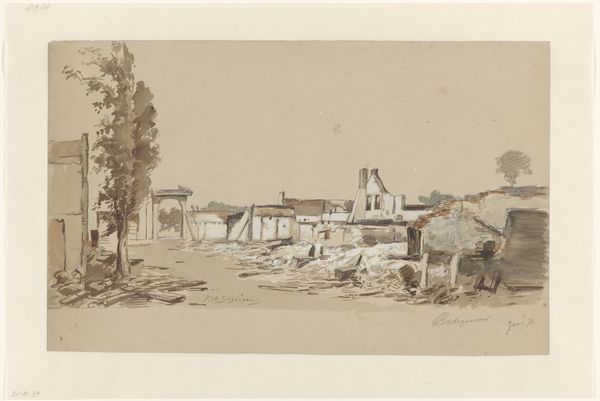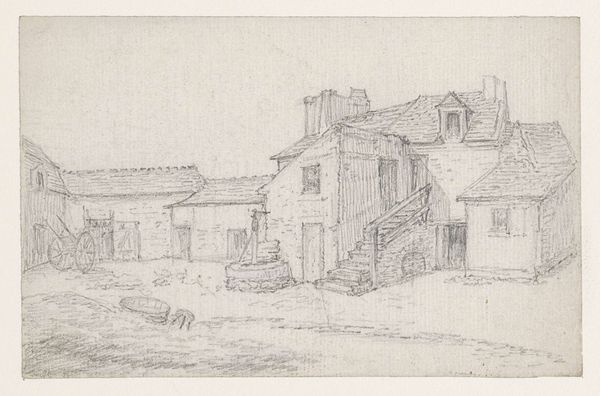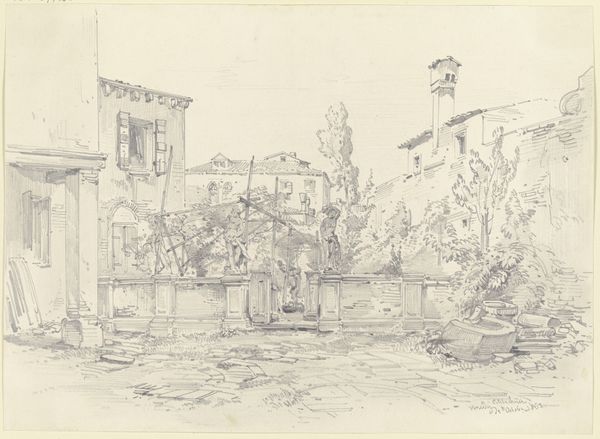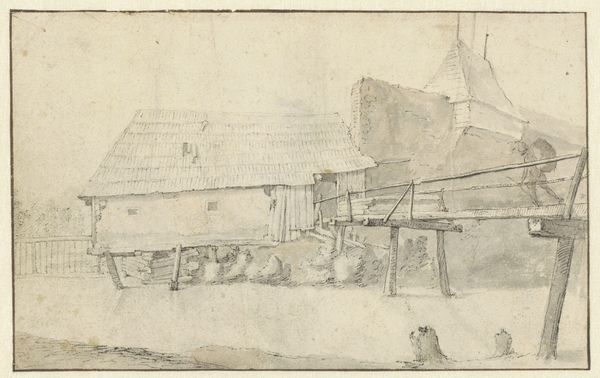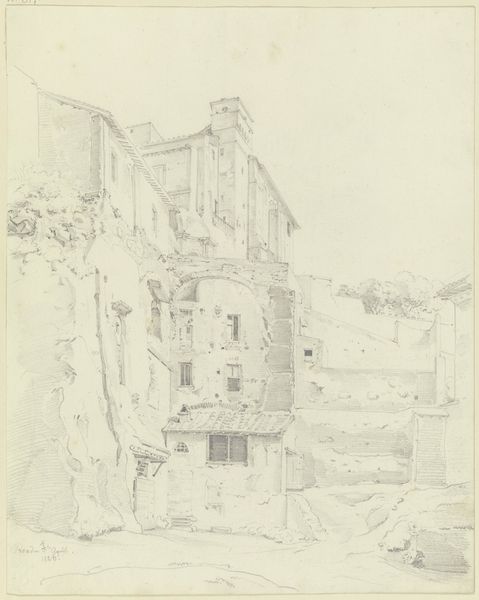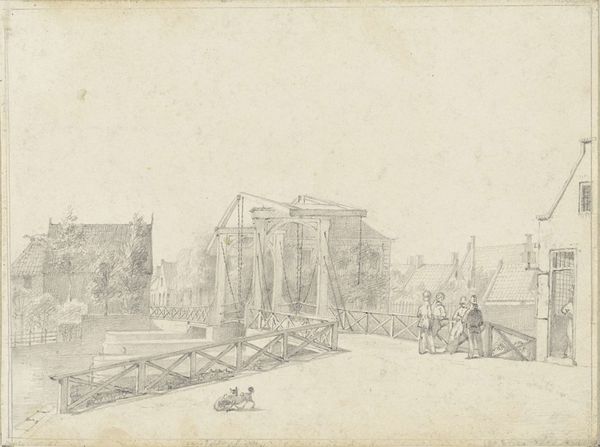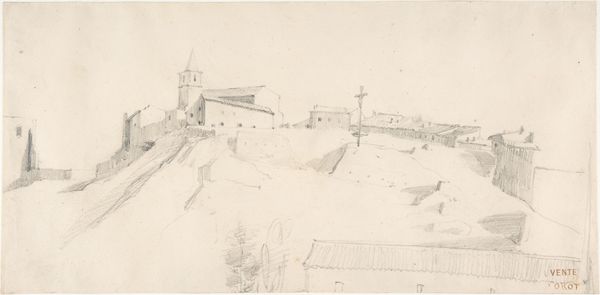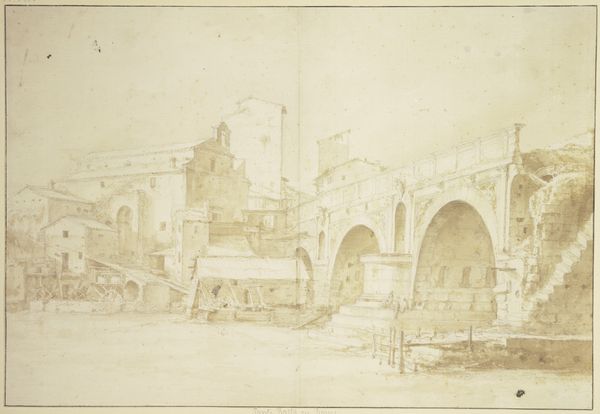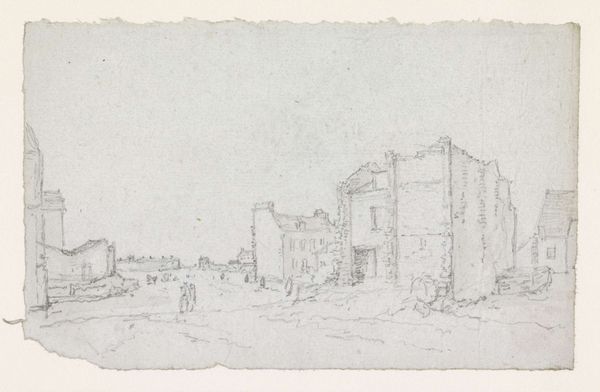
drawing, pencil, architecture
#
drawing
#
landscape
#
pencil
#
architecture
#
realism
Copyright: Public Domain
Curator: Looking at this pencil drawing by Fritz Bamberger titled "Group of houses with donkeys" from 1857, one is immediately struck by its delicate, almost melancholic tone. Editor: The light definitely contributes to that mood. It's fascinating how the artist uses shadow to define the architecture. What is emphasized about the composition or how the inhabitants negotiate the shared social landscape? Curator: Well, Bamberger was deeply engaged with representing daily life and class distinctions, even within landscapes. The animals suggest a certain labor is at play here, possibly implicating human-animal relations in oppressive or coercive systems. What do you read from that aspect? Editor: It reminds me of processional imagery—the kind you see throughout Byzantine art, Roman friezes or even certain depictions of migration that recur throughout modern and ancient history. These animals act as vehicles; perhaps also conveying ideas related to journeys. Their presence also underscores the historical relationship humans have with animals that may connote resilience or subjection based on regional dynamics and period values. Curator: Indeed. It raises crucial questions about class, labor, and human interactions that require us to go beyond aesthetic appreciation, delving into its political undercurrents that underscore systemic structures and how art becomes a way to challenge norms. The use of drawing adds another dimension. It feels intimate, immediate… almost like a direct transcription of a fleeting observation, what meaning may exist in rendering with pencils that isn't available when employing painting for such scenes? Editor: Precisely, the medium emphasizes an objective quality. This objective method evokes scientific expedition and record-taking during the Victorian era—cataloging experiences while reinforcing or subverting symbols attached specifically and culturally within those depicted people and things alike which in-turn helps unveil shared understanding between our internal mental images along broader social ideologies. Curator: Your analysis has brought out how a seemingly simple depiction intertwines multiple complex layers relevant for thinking beyond representational visual realms–acknowledging histories intersecting identity markers. Editor: Right, let’s not simply admire but truly question – unravel how visuals like this inform public perspectives across societal structures and perhaps alter established presumptions too…
Comments
No comments
Be the first to comment and join the conversation on the ultimate creative platform.
